8 B2B Content Marketing Examples to Inspire Your Content Strategy

B2B content marketing is a type of promotion that brands use to engage another organization or its employees through digital content. Content can come in many formats, such as blog posts, videos, and webinars.]
Content is essential for B2B companies to make purchasing decisions. According to Demand Gen’s 2022 Content Preferences Report, 72 percent of B2B buyers engage with at least three pieces of content before talking to a salesperson. So it’s no wonder that, according to our own research, 66 percent of content marketing teams have increased the amount of content they’ve created over the past year.
Businesses that invest in content marketing reap the benefits.
B2B content marketing can be a sustainable source of growth for your business. Get inspired by these eight B2B content marketing examples. Then analyze your content’s performance, so you can create the right content for your target audience.
Table of contents
- Klaviyo’s comprehensive guides
- Zendesk’s annual reports
- Aspire’s Influencer Academy
- Lattice’s HR and people management templates
- Nik Sharma’s weekly DTC newsletter
- Moz’s Whiteboard Fridays
- 15Five’s HR Superstars podcast
- Dropbox customer stories
1. Klaviyo’s comprehensive guides
Klaviyo develops long-form content about emerging topics to guide ecommerce marketers through a changing landscape.
For example, A Marketer’s Full Funnel Guide to Navigate Data Privacy Changes launched soon after Apple and Google announced new restrictions on consumer tracking. This resource unpacks how ecommerce brands can change their approach to effectively market their brand without third-party data.
Klaviyo created a whole marketing campaign around the guide, including a landing page. The page uses creative video and FAQs to introduce readers to the concepts explored in-depth in the full guide.
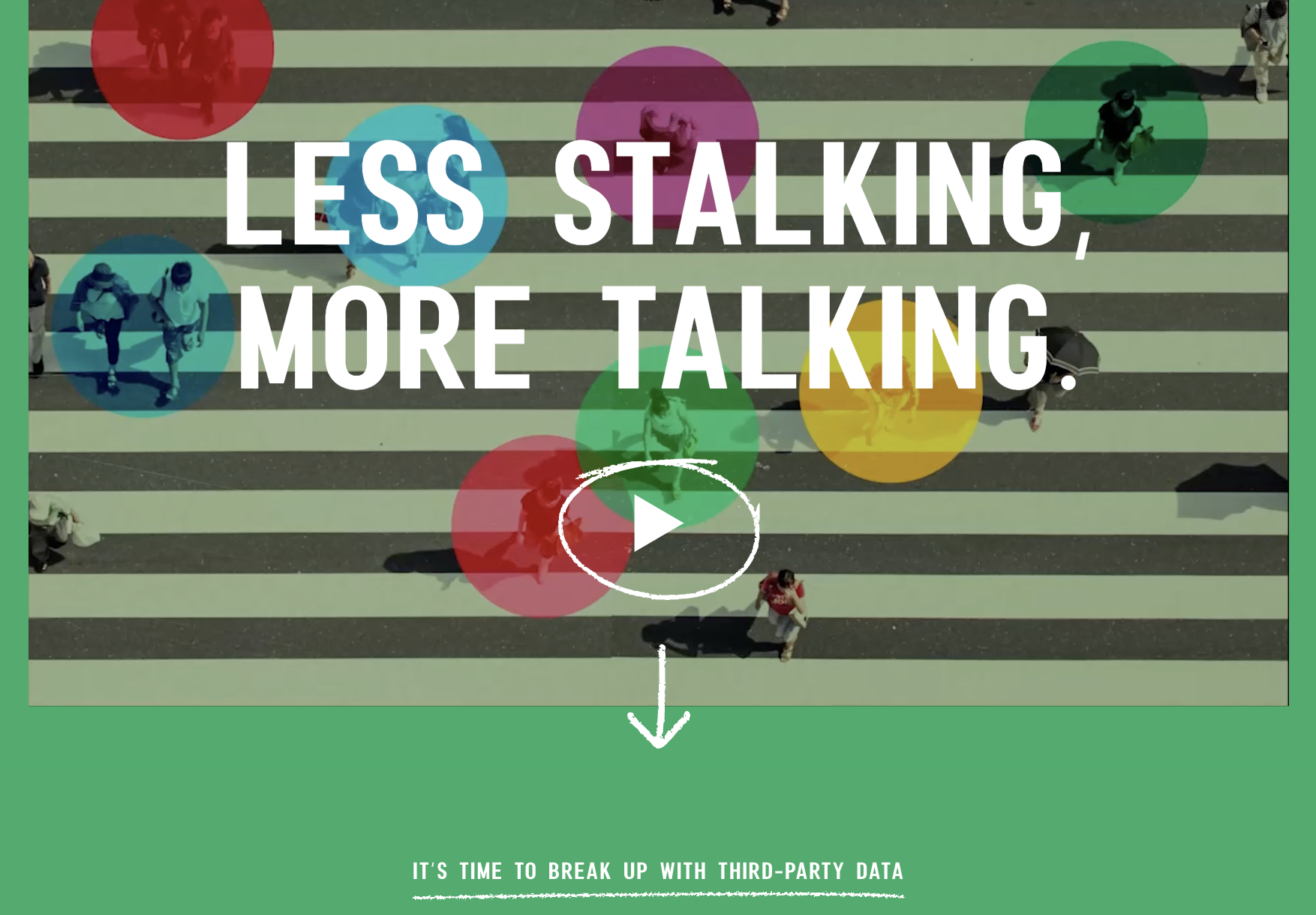
This type of content shows B2C marketers they can rely on Klaviyo for up-to-date digital marketing advice. Klaviyo addresses their pain points in an evolving world—turning the company into a leader in these conversations. Their audience grows, and so does their funnel of potential customers.
2. Zendesk’s annual reports
Zendesk uses proprietary data to their advantage by annually creating some of the most trusted research-backed whitepapers in the customer service and sales industries..
One of these is a Customer Experience Trends report. Insights are drawn from extensive internal usage data on the company’s more than 97,000 customers and more than 8,000 survey responses, giving readers confidence in the reporting.
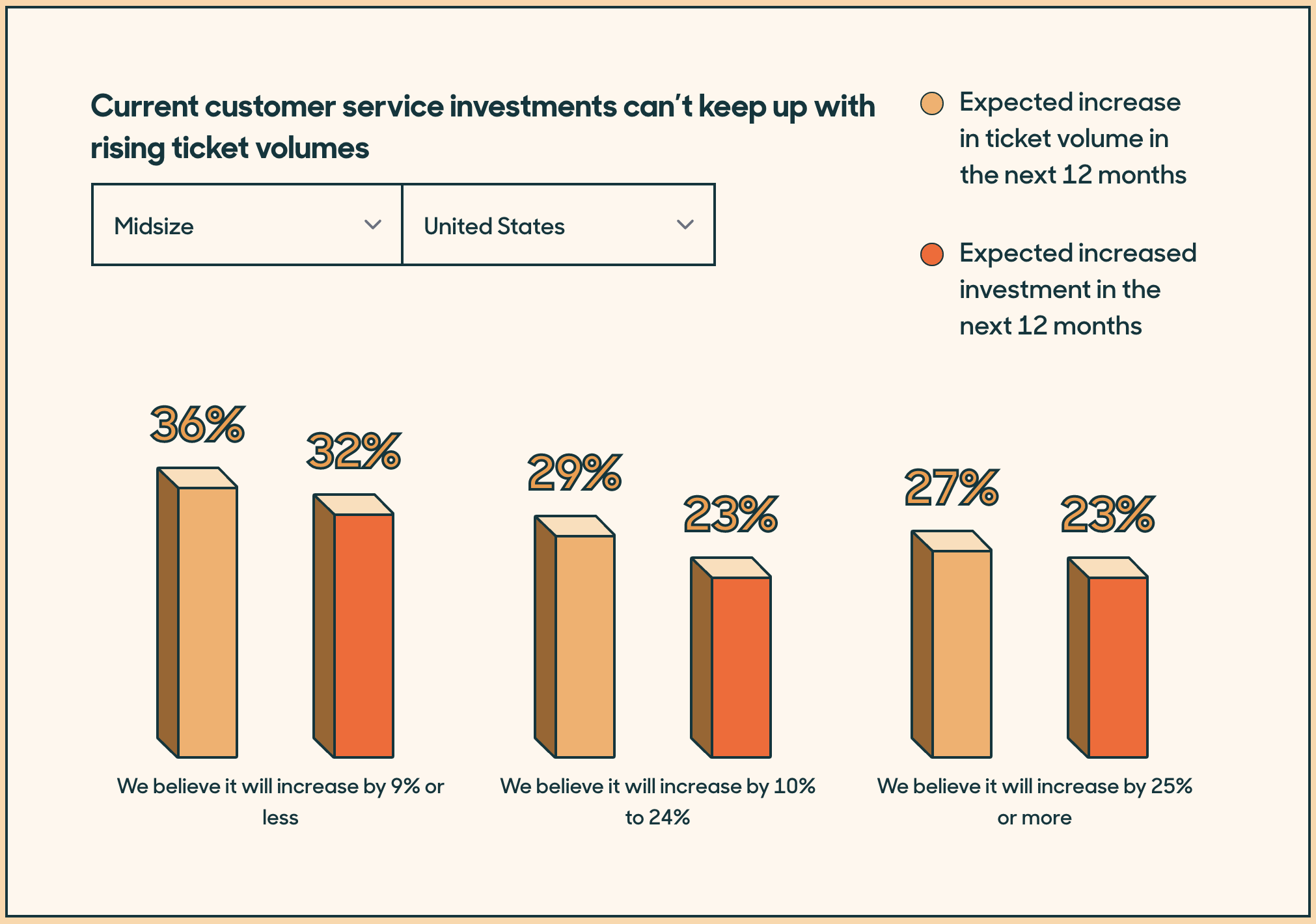
The report is interactive, so audiences can view the data most relevant to them. There are dropdowns for countries as well as different kinds of businesses from small business to enterprise, finance to retail.
These insights help shape readers’ customer experience strategies for the upcoming year. And like Klaviyo’s guides, Zendesk’s reports also grow brand perception and can add potential customers to the pipeline.
3. Aspire’s Influencer Academy
Aspire created the Influencer Academy, a free video course that teaches brands how to develop an influencer marketing program.
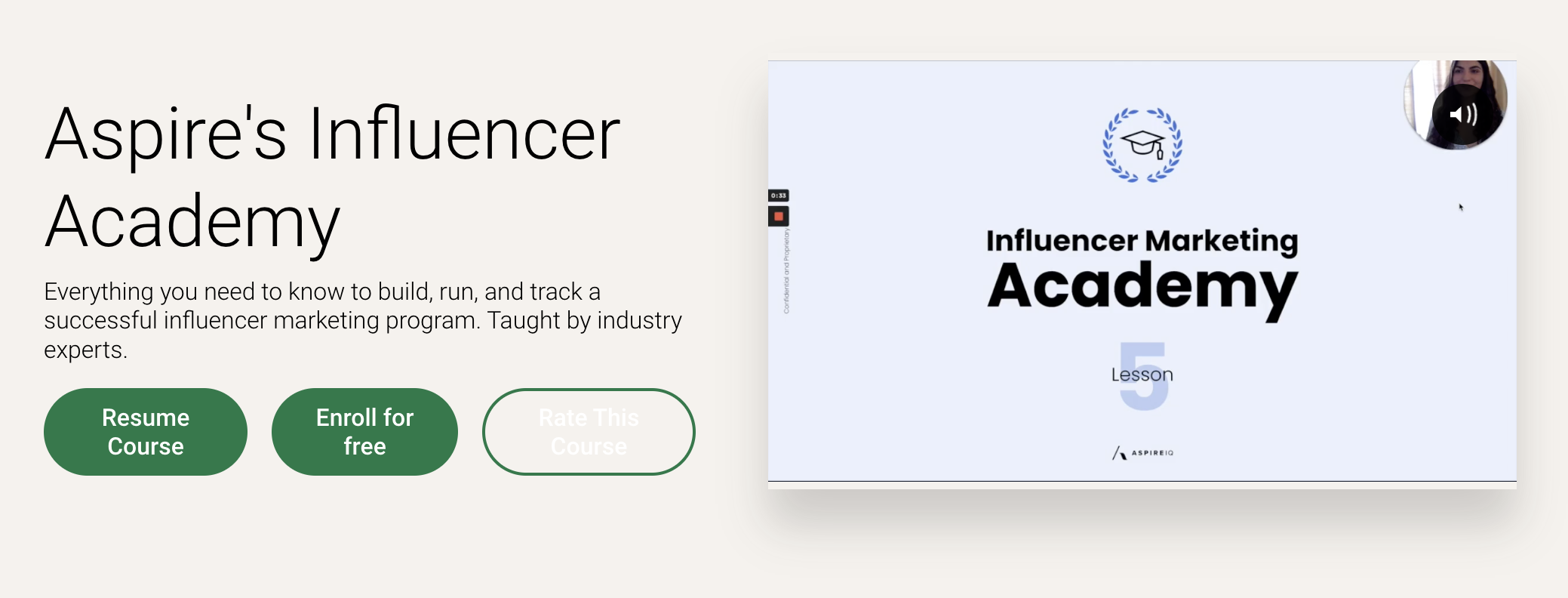
Influencer marketing is still a relatively new field, but it grew to a $13.8B industry in 2021. Marketers need to understand how they can use this booming channel to grow their business.
Aspire capitalizes on this by positioning itself as a go-to destination for educational content on influencer marketing. Alongside its video course, Aspire helps people get started by providing downloadable templates, like an influencer outreach template and a rate calculator.
By building relationships at the beginning of a company’s journey with influencer marketing, Aspire builds trust and loyalty, ultimately earning new customers.
4. Lattice’s HR and people management templates
Lattice shares HR and people management templates on their website, hoping to appear in Google search results and attract people ops managers searching for resources. These templates connect viewers back to Lattice’s product.
Lattice’s New Hire Onboarding Survey, for example, helps HR professionals gather feedback on the onboarding process for new employees. The template can be manually added to any survey software, but it works seamlessly with Lattice’s product.
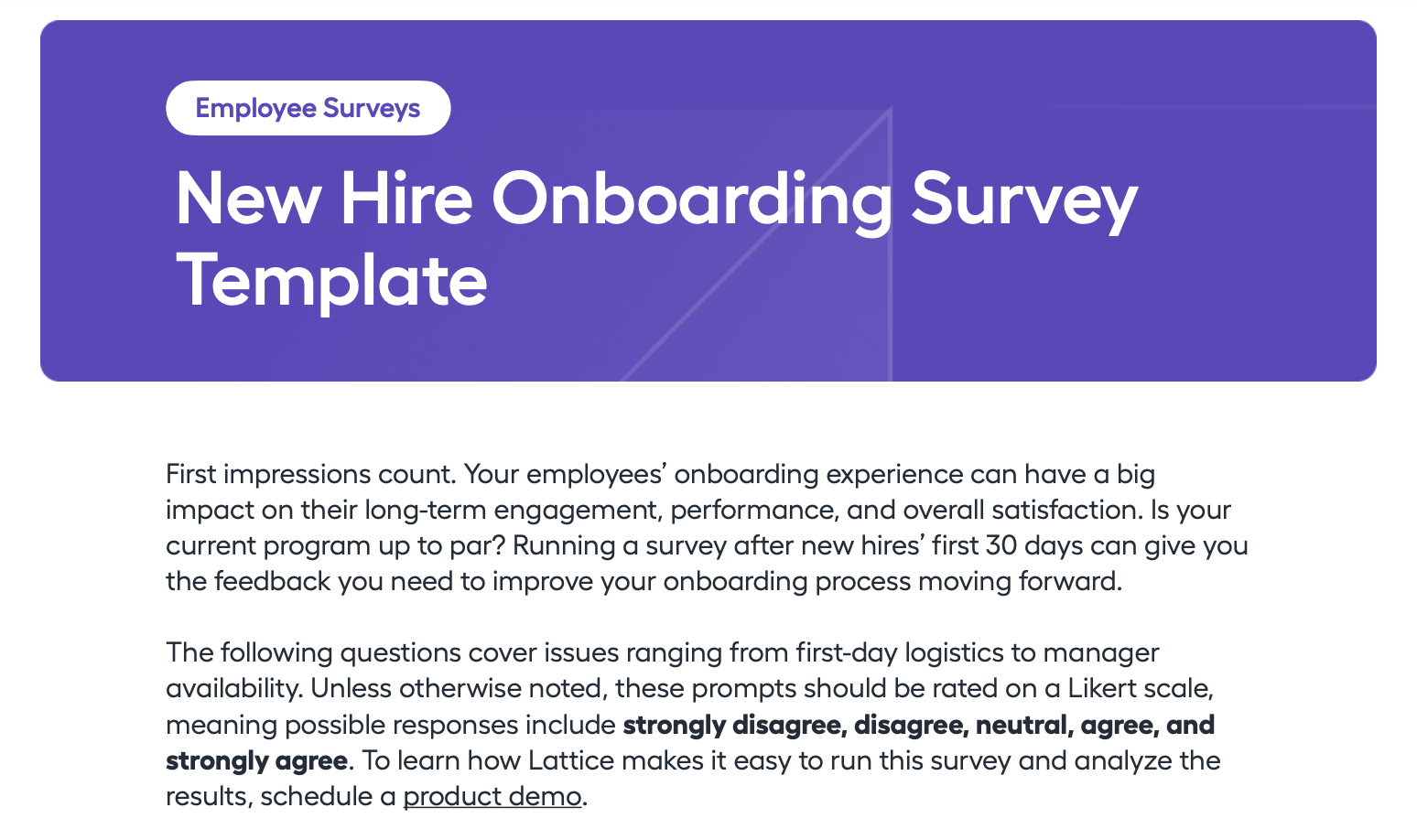
Companies that use Lattice have access to templates right in the software, so they don’t have to write these questions manually. Plus, by using Lattice, customers can track trends in responses, another incentive to use the software.
The content is a lead generator, too, because Lattice gates the content. When a prospect downloads a template, their email address goes right into Lattice’s CRM, helping a salesperson kickstart the relationship.
5. Nik Sharma’s weekly DTC newsletter
Nik Sharma is a DTC investor and advisor who sends out a weekly newsletter with tips for ecommerce brands.
B2B email marketing is often used to promote content on a blog, but Nik’s content is exclusive to his newsletter. Instead of the typical newsletter format of compiling links and directing readers to a blog URL, all of Nik’s newsletter content is right there to read.
A breath of fresh air in a sea of fancy marketing, Nick’s email feels like a personal letter.

Through the newsletter, Nik establishes himself as an ecommerce thought leader. Readers rely on his advice every week, so there’s trust built if they want to hire him as a consultant. Nik also earns commissions on many of the vendors he recommends in the newsletter..
6. Moz’s Whiteboard Fridays
Moz’s Whiteboard Friday is a popular weekly SEO video series the company has run for nearly a decade. As the name suggests, the videos feature an SEO expert from Moz in front of a whiteboard explaining the latest SEO tactics and trends.
In one recent Whiteboard Friday, user researcher Ola King unpacked the concept of “next search intent“—what a reader might be looking for after their initial search.
Video often helps explain technical concepts easier than a blog post. No wonder viewers see Moz as a trusted resource and partner in navigating the search engine marketing discipline.
7. 15Five’s HR Superstars podcast
15Five’s podcast HR Superstars serves as a hub for HR professionals to learn how other companies manage their employees and navigate trends in work culture.
According to a BBC survey, branded podcasts grow brand awareness, consideration, favorability, and purchase intent. If you have an idea for a podcast for your business, it’s a worthwhile content format to explore. The survey also mentions that 94 percent of listeners multitask.
HR Superstars episodes are usually 30 to 60 minutes long, an ideal length for commutes, lunch breaks, or doing chores around the house.
15Five makes their podcast engaging by interviewing a wide variety of HR pros from many different companies discussing important topics like inclusion, the four-day workweek, and building a remote work culture.
Even if the podcast relates less directly to 15Five’s core product compared to other content marketing approaches, showcasing brand authenticity and how the organization lives out their mission” are great drivers of engagement and perception.
8. Dropbox customer stories
Case studies and customer success stories help potential customers see the value in your product through real-life examples. But many of these are dry and boring. Dropbox takes a new spin on customer stories by focusing on inspiration first.
One focuses on how a new company built their own distillery. The actual construction has nothing to do with storing files in Dropbox, but this angle is what makes the narrative intriguing, worth reading as it speaks to Dropbox’s entrepreneur persona.
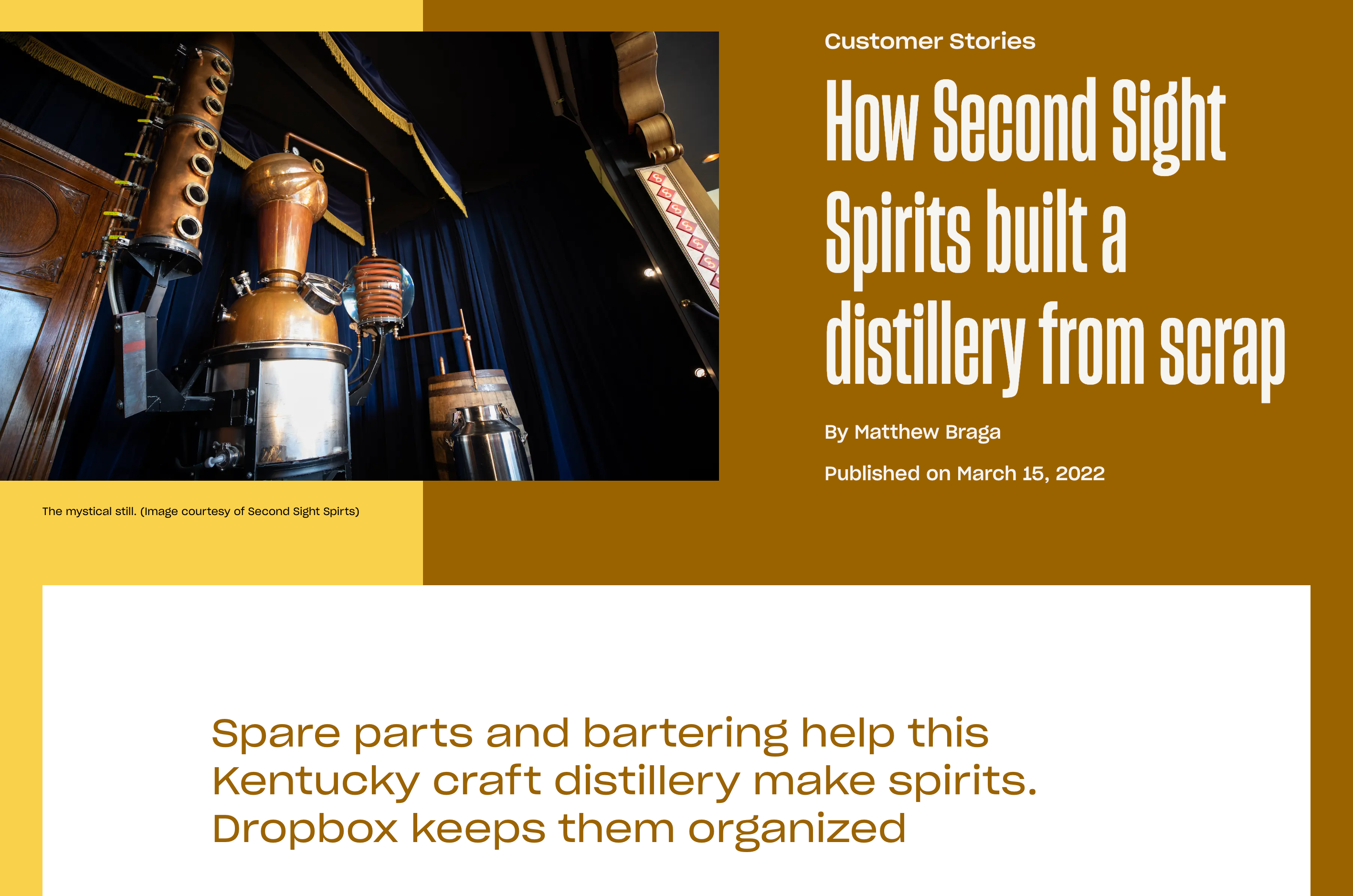
Yes, Dropbox does weave in its product eventually, but it’s not the typical hard sell. Instead, they position themselves as essential infrastructure in making entrepreneurial dreams come true.
Analyze your content performance and double down on what works
Content marketing is a powerful channel, but 49 percent of content marketers don’t know how well their content is performing. When you don’t know what’s working and what’s not, you waste effort and resources. And if you create content that doesn’t resonate with your audience, they’ll stop listening to what you have to say.
Once you have your B2B content marketing strategy in place, tie content metrics like these back to your goals determining what truly engages your audience, so you can create more high-quality content.
Consider a content analytics solution like Parse.ly, included in the WordPress VIP platform, to get visibility into the impact of your content marketing. Want to learn more about how we can help?